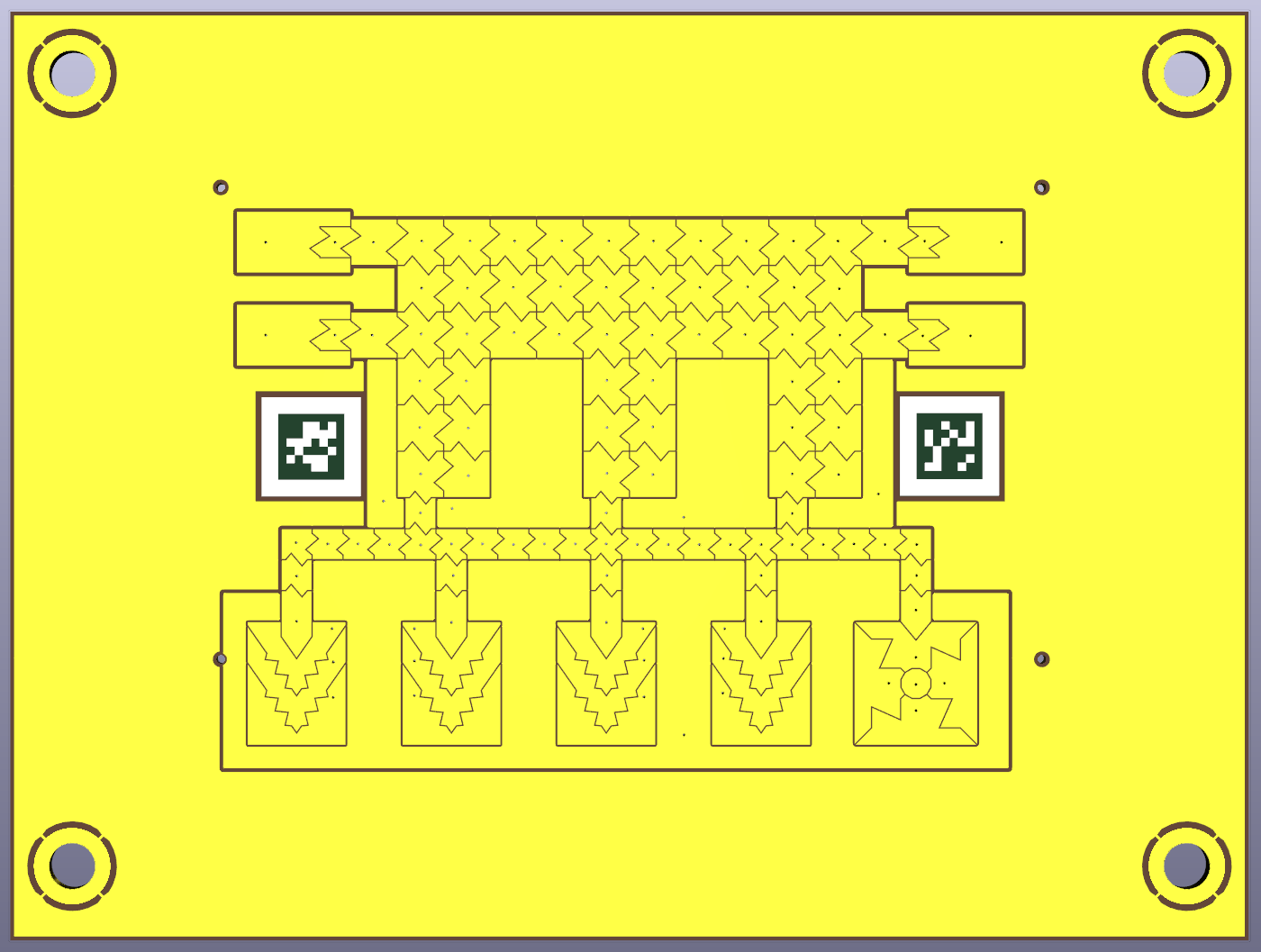A python library to make it easier to experiment with digital microfluidics.
DMF devices use arrays of electrodes laid out on a subtrate to control small droplets of fluids. One really cheap and easy way to fabricate these substrates is as printed circuit boards (PCBs). KiCad is open source software for designing PCBs, but laying out a complex pattern of electrodes in KiCad can be cumbersome and slow, and this makes iterating and trying different designs more difficult.
Fortunately, KiCad also uses simple file formats, and has a python scripting interface that makes it fairly easy to programmatically control the layout of design. The dmfwizard python package takes care of some of the gritty details of defining the electrode layout, like creating the jagged crenellations between electrodes that improve droplet transport, and ensuring the design meets the required copper-to-copper clearance rules everywhere.
It is essentially a domain-specific-language for describing the board layout in a python script, and then exporting all of the information necessary to automatically place all of the electrodes in pcbnew.
It also helps to generate the layout information used by the PurpleDrop driver software: the "board definition" file.
Documentation is hosted at https://dmfwizard.readthedocs.io. There's an example project in the examples directory of this repo, and a corresponding tutorial.
This project is currently tested with KiCad v5.10, and likely works with all 5.x versions of KiCad. When KiCad 6.x is released, there are likely to be some incompatibilities that will require updates to dmfwizard.
The kicad_component_layout plugin is used to import the component placement information into pcbnew.
